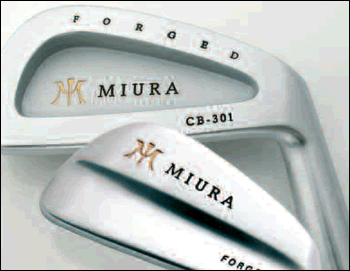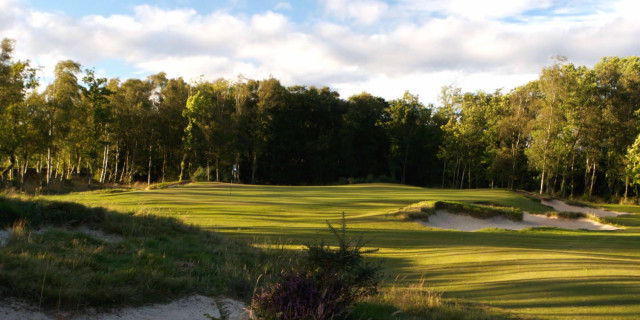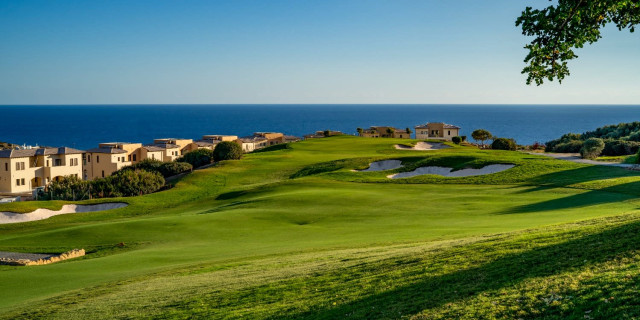Forging Excellence from Miura
For the ultimate in precision forging, golfers ‘in the know’ turn to the services of the legendary Japanese clubmaker Mr Katsuhiro Miura. His clients have included some of the world’s finest players, and now, via a network of specialist club-fitting centres throughout Europe, the feel, performance and consistency of the game’s finest forged clubheads can be yours. TO APPRECIATE THE LEGEND that is Miura, a golfer must first understand the nature of the forging process. For while many of the world's leading manufacturers mass-produce ‘forged’ clubheads, the painstaking hand-forged craftsmanship of Mr. Katsuhiro Miura has, in his 50 years at the forefront of the industry in Himeji, Japan, elevated the principle of manipulating steel to an art form.
TO APPRECIATE THE LEGEND that is Miura, a golfer must first understand the nature of the forging process. For while many of the world's leading manufacturers mass-produce ‘forged’ clubheads, the painstaking hand-forged craftsmanship of Mr. Katsuhiro Miura has, in his 50 years at the forefront of the industry in Himeji, Japan, elevated the principle of manipulating steel to an art form.
Not by coincidence have a number of the game’s greatest players and ball-strikers turned to Miura to forge the heads of the competing brands to which they are signed, with at least two Masters champions in the last 20 years
among those to have carried the results of his knowledge and craftsmanship – if not his signature – to victory at Augusta.
Forged clubheads are made from a steel that is heated and pounded into shape, the majority being struck just twice with a forging hammer. Miura’s irons, which begin life as a tablet of the finest mild steel, get one more striking, creating tighter molecular structure in the clubhead.
“Think of it this way,” explains Robert Cooke of Golf Ballistix in Belfast, the mainstay of Miura’s European operations. “Under a microscope, the grain structure in a typical off-the rack forged clubhead would look like a jar full of marbles – lots of air between the grains. The Miura forging process results in a much tighter grain structure – akin to a jar full of sand.
“With a more uniform structure, there are fewer voids (or hot spots) in the steel, and less vibration at impact, which is why Miura clubheads deliver a superior energy transfer to the ball and reward the player with a higher ballspeed, a more penetrating ball flight and that elusive ‘buttery’ feel. Exactly what the more accomplished player looks for in his irons.”
But it’s not only the physical pounding of the raw material that sets Miura apart. The triple-step forging process includes the separate forging of the hosel, which is then ‘spin welded’ to the clubhead. “This is another unique characteristic of Miura’s clubmaking,” adds Cooke. “The engineering process creates the industry’s most consistent hosel, while the proprietary spin welding procedure actually makes for a stronger hosel than anything that is forged in one piece. Such is the precision of the engineering here that the bore depths and hosel heights are identical on every Miura clubhead, which means that each and every shaft is perfectly centred. Again, the benefits to the golfer are measured in terms of performance, feel and consistency.”
Such attention to detail does not lend itself to mass production: Miura produces just 50 sets of irons each week (roughly 1% of the output of mainstream manufacturers). The current range includes the classic blade profile, with a thin top edge and a straight connection where the shaft meets the face, while in the shape of the CB301 Miura offers the profile of a blade with the benefits of a cavity back (this is currently the most popular model in the range). A precision ground wedge series with multiple loft and bounce options completes the set make-up.
Making Miura
A cylindrical stick of mild irons is heated to 1200ºc, struck with the hammer to create the rough shape, and then trimmed to remove excess metal. The hammer then strikes again to further refine the shape and molecular structure. It is then struck a third time at a preset force to finally define these elements. The density of the metals molecular structure should be like a jar of sand, rather than a jar of marbles no gaps. The head is also weighed at every stage to ensure consistency. At this stage the iron has a smooth and unblemished finish. Number, name and score lines are then pressed into the head. The hosel is then spin welded and fused onto the head. Expert grinders, including Mr Miura himself, then make final adjustments of weight, finish and design.
The ultimate in custom-fitting
A network of authorised Miura dealerships throughout Europe offer serious golfers the opportunity to learn more about the Miura philosophy and – moreover – experience the feel and superior performance of his products via a state-of-the-art fitting process that determines the optimum clubhead and shaft combination to suit a player’s swing characteristics. To complement the level of engineering within the clubhead itself, the selected shaft is CSS ‘pured’ before fitting, guaranteeing the ultimate in consistency throughout the set.
For details of your nearest specialist Miura fitting centre, visit Miura’s exclusive European distributor www.golfballistix.com
Notes:
- Miura had their first pro player success with J.L. Lewis and Ray Floyd.
- 2009 Futures Tour winner and graduate to the 2010 LPGA Tour member Samantha Richdale actually bought her set of Miura Irons on her own.
- Miura does not solicit club use by tour players but more and more calls from them keep coming in for requesting access to their equipment.
- With diminishing numbers of complete equipment contracts the number of pro tour golfers playing 1 or 2 Miura clubs is growing.
- The Yoshitaka (Mr. Miura's #1 son, age-wise) Miura wedge line (60 degree currently) will be expanded this Fall with 49, 51, and 53 degree models.
- The R&A has already approved new Miura clubs for 2010 under the new Groove Rule.
- Yoshitaka Miura was responsible for the Miura work with TaylorMade until 2004.
- Yoshitaka continues to be the one who works directly with many of the pros.
- C Grind Wedges, with more heel and toe relief, with lofts of 55, 57, and 59, will be introduced shortly
- For 2010 Katsuhiro Miura is working on a new iron model that conforms to the new Groove Standards with traditional Miura feel and performance.
- All current Miura models will be made available with conforming grooves starting later this year.
Related Content:
What do you think? post your thoughts and feedback on the Golfshake Forum: https://forum.golfshake.com/


















